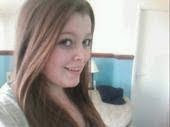Camera Angles
Long Shot- Shows the whole image making it look almost life-sized. Also gives the impression that the image is only that far away in real life. This shot shows the whole body/object.
Medium Shot- Has the body/object in the shot from the waist or knees up. For an action shot, has minimal background in it.
Close-Up Shot-This shot focuses on a particular object very close up. Background detail is kept to a minimum. Used to show the importance of something, kind of a hint to the audience, or to show a specific detail that you can only see very closely.
Dolly Shot(Tracking)- The Camera is placed on a moving veichle which enables it to move alongside the character.
Pan- Movement of the camera that scans the scene horizontally. The camera is usually placed on a tripod to acheive this.
Ttilted Shot- Camera is used to scan a scene vertically, similar to pan.
High Angle Shot- When the camera is usually located high above the body/object. The camera looks down on the point of focus which often gets swallowed up by the setting. High action shots usually make the character look vunerable or powerless.
Low Angle Shot- This is when the camera is positioned low on a vertical axis, often at knee height, looking up.
Shot Reverse Shot- This is a film technique where one character is shown looking at another character, and then the other cahraceter is shown looking back at the first character.
0.00-0.11= The sunrise is a establishing shot.
0.12-0.14= These two shots are both close-up shots.
0.17-0.19= This shot is a long shot, because it has the whole body in it including the body's feet and head.
0.20-0.24= The shot of the two pelican's is a two shot, because there is two of them in the shot.
0.27-0.31=This shot is a high-angles shot, beacause the camera is situated high above.
Wednesday, 25 November 2009
Camera Angles
Subscribe to:
Post Comments (Atom)




No comments:
Post a Comment